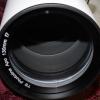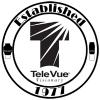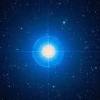
AstroTortilla vs UniMap for plate solving
#1

Posted 18 October 2013 - 03:31 PM
I see both softwares as a free alternative to Celestron StarSense and probably with a better performance too.
I have played with both only inhouse and I like more Unimap.
Here is Unimap http://larryo.org/as...imap/index.html .
Unimap works without an Internet connection.
I haven't understood yet how to use AtroTortilla.
Here it is http://sourceforge.n...illa/home/Home/
#2

Posted 18 October 2013 - 03:54 PM
Not sure how it would work with the hardware you have listed.
Terry
#3

Posted 19 October 2013 - 12:18 AM
#4

Posted 19 October 2013 - 12:21 AM
Does AtroTortilla work with Sharpcap or Firecapture?
#5

Posted 19 October 2013 - 04:26 AM
it is not as fast as PinPoint or Elbrus but is completely blind - you don't need to provide the camera orientation, pixel scale, or even hints as to the approximate RA/DEC where it's solving.
#6

Posted 19 October 2013 - 09:32 AM
#7

Posted 19 October 2013 - 10:04 AM
AstroTortilla is fantastic software and I would gladly have paid for it.
#8

Posted 19 October 2013 - 10:08 AM
I haven't played with Elbrus but Unimap looks much nicer than Astrtortilla.
Without hints both Astrotortilla and Unimap fail to solve or need very much time to solve an image, as I experimented inhouse.
#9

Posted 19 October 2013 - 10:10 AM
#10

Posted 19 October 2013 - 11:37 AM
The main problem you have is that by doing the aiming with a different scope that isn't perfectly aligned.... Well you can figure it out. Just try the software. Or, try SGP. It has the option for a localized astrometry server too.
#11

Posted 19 October 2013 - 12:42 PM
Unimap works without an Internet connection.
Thanks for highlighting that fact. My observatory is remote and has no internet access so this sounds ideal.
#12

Posted 19 October 2013 - 01:40 PM
#13

Posted 20 October 2013 - 07:56 AM
Why would you not just use plate solves with your C11? There shouldn't be any issues doing that. I get my images within 50 pixels of my target easily and it's usually around 8 pixels.
The main problem you have is that by doing the aiming with a different scope that isn't perfectly aligned.... Well you can figure it out. Just try the software. Or, try SGP. It has the option for a localized astrometry server too.
The only reason I can think of is for visual use. If you wish to use it as a means to get really accurate goto's then use the main scope.
It's an interesting idea.
#14

Posted 20 October 2013 - 10:27 AM
In my experience AT is much better plus if has mount integration. With AT connected to the mount (AT gets hints for RA and DEC) and the right parameters I can get a plate solve in under 10s. Then it will re-sync the scope.
My next attempt will be to use the databases it installs with SGP.
Cheers!
#15

Posted 20 October 2013 - 11:57 AM
astrotortilla will work with any software that outputs FITS, JPEG, and can even capture from the screen. internally it uses the astrometry.net blind solver, which has been proven rigorously in research to be a very robust solver.
it is not as fast as PinPoint or Elbrus but is completely blind - you don't need to provide the camera orientation, pixel scale, or even hints as to the approximate RA/DEC where it's solving.
AT not as fast as Pinpoint? On my system it totally smokes Pinpoint and Elbrus. If you are doing every solve as a blind search with no pixel scale or centre coordinates then indeed it is slower. With the right command line arguments to the astrometry.net engine you'll be impressed with the speed. A SSD is a recommended location for the index files. Better yet, if you have a lot of ram, having them in a ram disk is fantastic! I never have to wait for solves now.
#16

Posted 20 October 2013 - 01:30 PM
#17

Posted 20 October 2013 - 01:40 PM
Sean
#18

Posted 20 October 2013 - 07:39 PM
On my system solves take about 20-30 seconds. It is getting RA/DEC hints, and constrained to a 30-degree area around the reported RA/DEC. I have also pruned down the indexes.
#19

Posted 20 October 2013 - 08:02 PM
Sean, if you can pass on your settings this would be much appreciated.
On my system solves take about 20-30 seconds. It is getting RA/DEC hints, and constrained to a 30-degree area around the reported RA/DEC. I have also pruned down the indexes.
What is your imaging scale, and do you have that properly set in AT? Have you tried reducing the search radius as well? The site listed in this thread has a lot of details that can really help. I tend to omit the -sigma 1 as my ccd image is pretty clean. Anyway if you save a fits file and for example place it in your cygwin home directory you can play around with the arguments (use --overwrite) to see what works best with your setup. I might be seeing a slight boost because I compiled a 64 bit recent snapshot of astrometry.net versus the much older one that is included in the AT package.
Sean
#20

Posted 21 October 2013 - 12:42 AM
It's possible that a large fraction of my solve time is due to file I/O. My fits are 35mb. But that camera is gone. Guess I'll try Binning with my new camera... The old one was an OSC and didn't bin well.
#21

Posted 21 October 2013 - 01:25 AM
I always use downsample = 2 or 3. And I put the minimal number of index files having the largest sky diameter down to the sky diameter of about a half of the camera coverage (30 arcsec). If you put all index files in the index folder, the computation will be slow even though scale-low is specified. The engine still tries to use some of index files with small sky diameters.
#22

Posted 21 October 2013 - 03:11 AM
yup i have also pruned my indexes. What i noticed was even with downsampling the solve time was still high. i think downsampling itself consumes CPU so it would be better to bin.
#23

Posted 21 October 2013 - 03:29 AM
#24

Posted 21 October 2013 - 07:42 AM
hi Anat,
yup i have also pruned my indexes. What i noticed was even with downsampling the solve time was still high. i think downsampling itself consumes CPU so it would be better to bin.
Have you tried adjusting sigma? I set mine to around 7 and get around 20-40 stars to search. Much quicker than if you are searching on several hundred.
Cheers!
#25

Posted 21 October 2013 - 08:38 AM
scale minimum 0, maximum 200 (arc-minutes). well i'll try again with tighter limits.
























